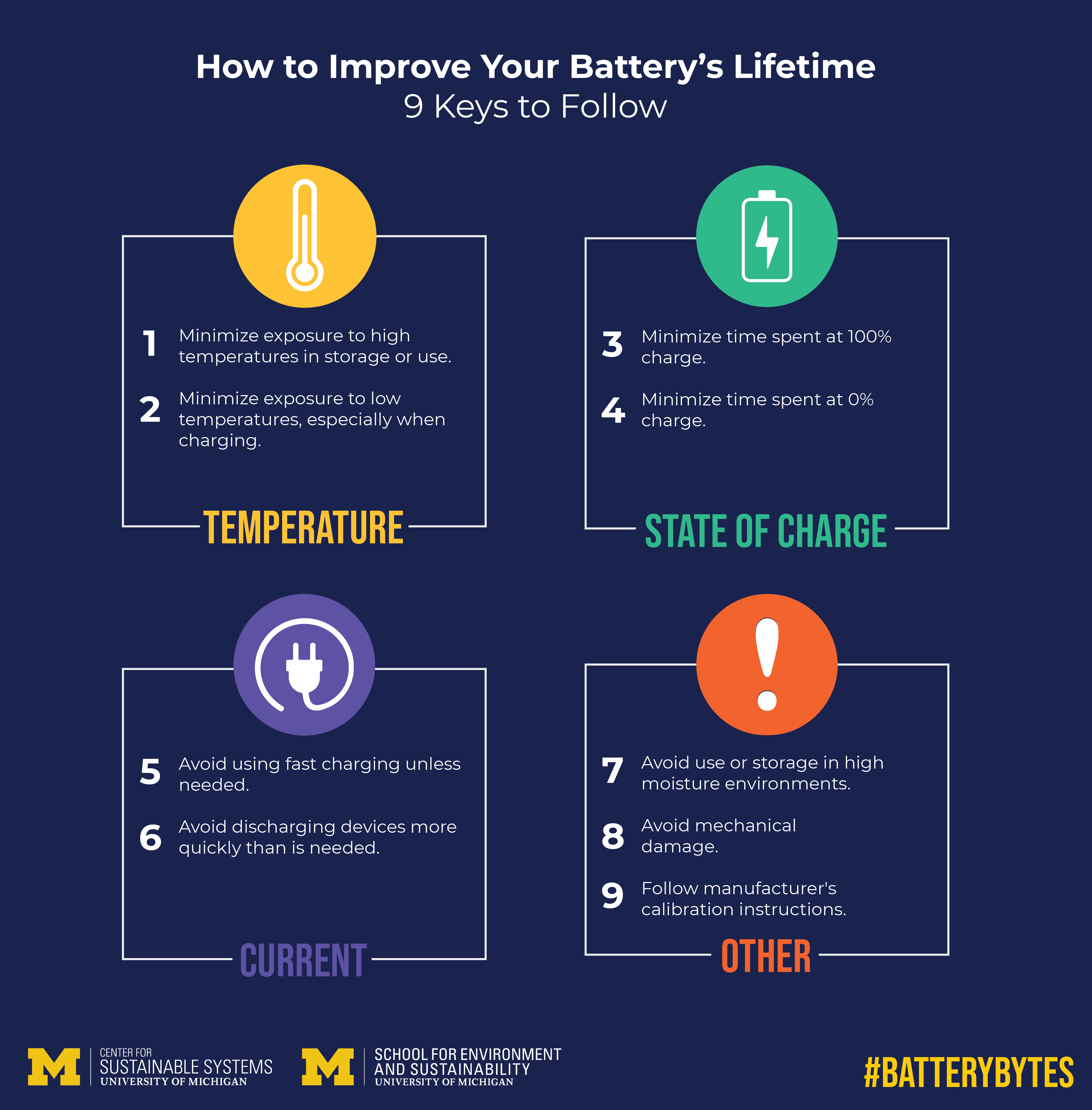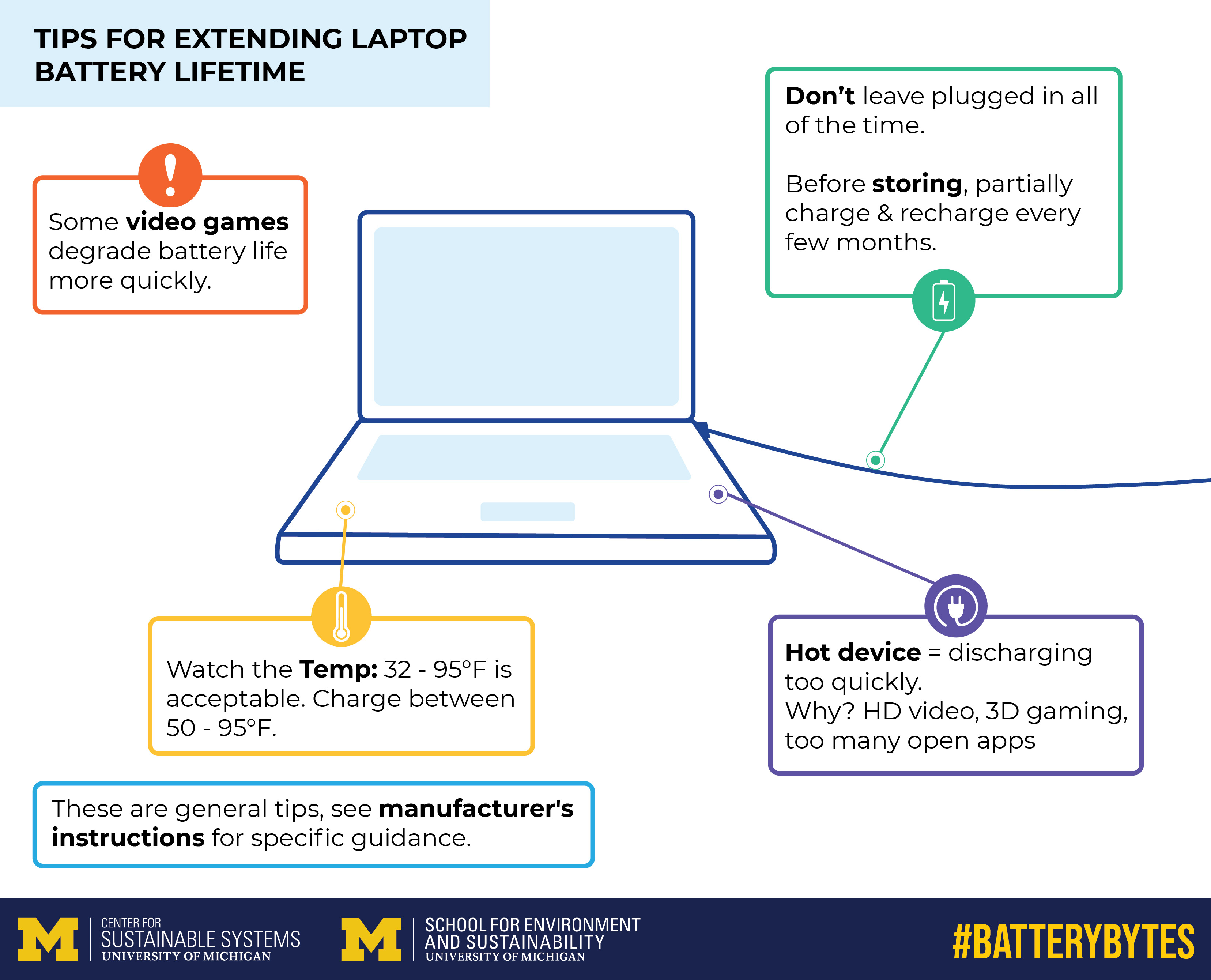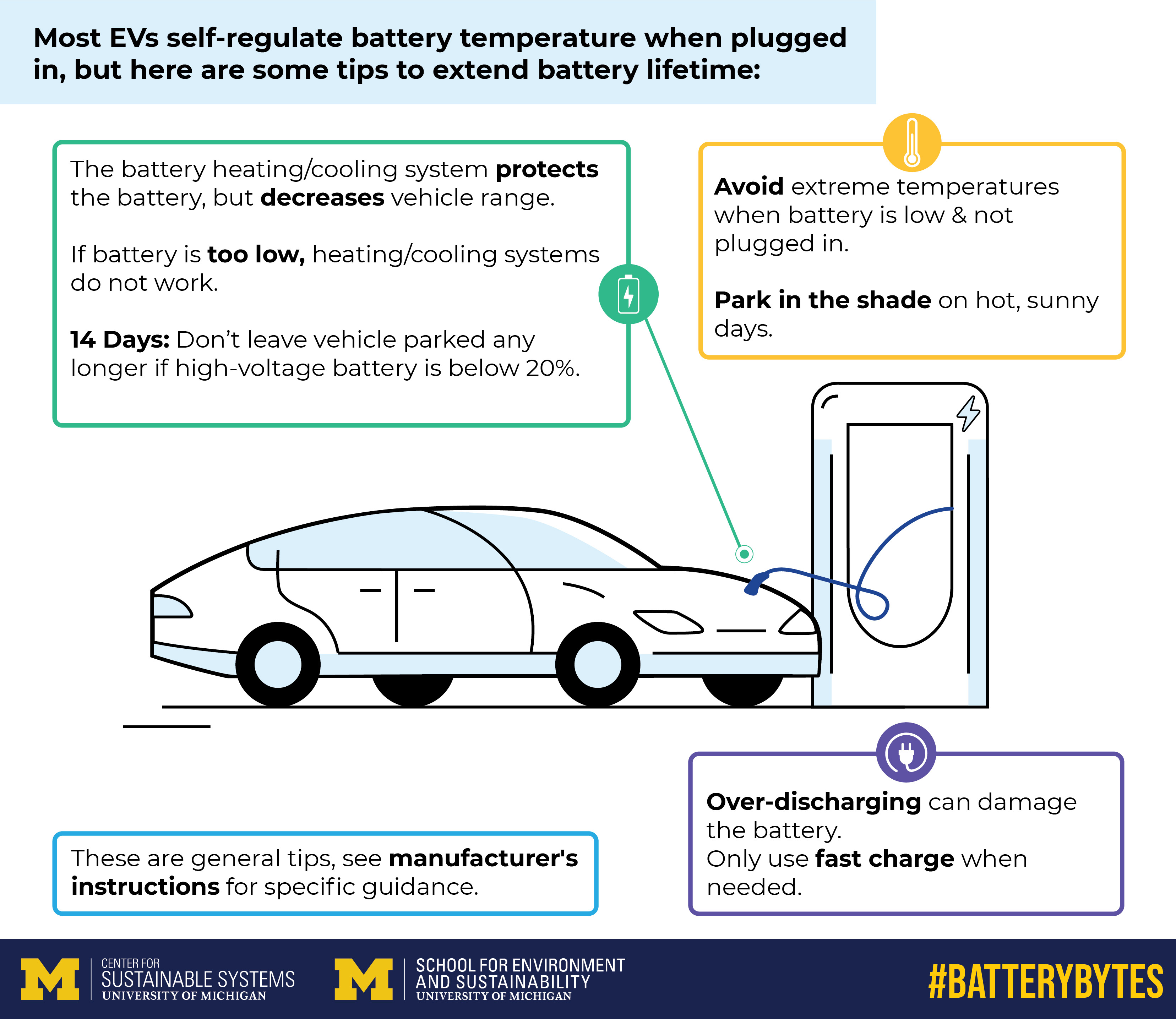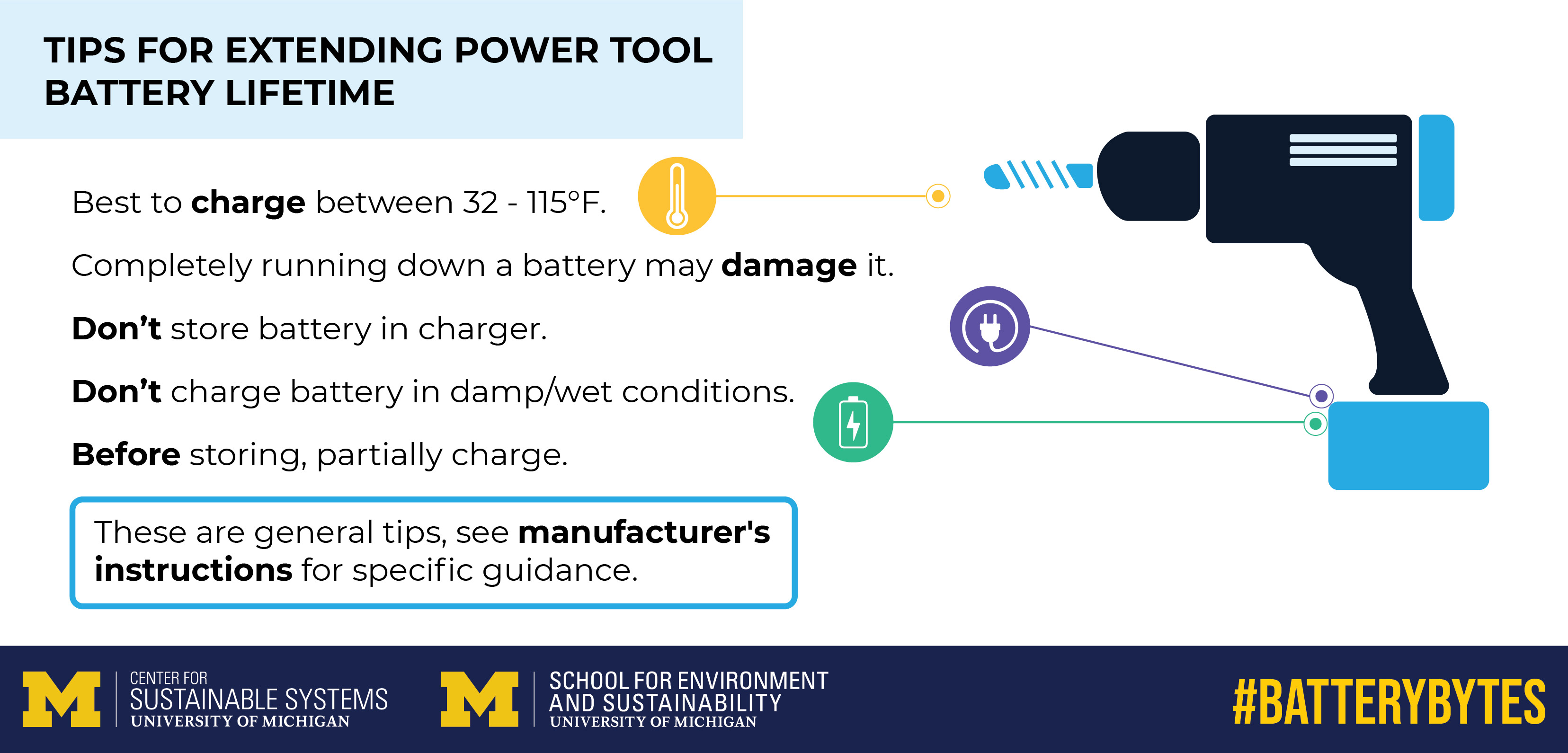
 back to all news
back to all news
Tips for extending the lifetime of lithium-ion batteries

ANN ARBOR—Lithium-ion batteries are everywhere these days, used in everything from cellphones and laptops to cordless power tools and electric vehicles.
And though they are the most widely applied technology for mobile energy storage, there's lots of confusion among users about the best ways to prolong the life of lithium-ion batteries.
To help clarify, University of Michigan researchers plowed through scores of academic papers and manufacturers' user manuals, as well as information on customer-support websites, to develop a list of nine best practices for lithium-ion battery lifetime extension.
"By minimizing exposure to the conditions that accelerate degradation, batteries can last longer. And this has a positive environmental impact, as battery production is a source of greenhouse gas emissions and many other pollutants," said study senior author Greg Keoleian, director of the U-M Center for Sustainable Systems at the School for Environment and Sustainability.
"Additionally, there are significant financial incentives for users to avoid adverse conditions, as the cost of lithium-ion batteries can range from 5% to over 50% of a product's cost."
The U-M team's findings were published Feb. 15 in the Journal of Energy Storage.
Many of the recommended practices are related to the three main variables that impact battery health: temperature, state of charge and current. Here are some general guidelines from the U-M researchers to maximize lithium-ion battery lifetime, along with a few specific recommendations from manufacturers:
- Avoid temperature extremes, both high and low, when using or storing lithium-ion batteries. Elevated temperatures can accelerate degradation of almost every battery component and can lead to significant safety risks, including fire or explosion. If a laptop or cellphone is noticeably hot while it's charging, unplug it. Minimize exposure to low temperatures, especially when charging.
- For electric vehicles, nearly all manufacturers include warnings about high temperatures in their owner manuals. Some of them advise parking in the shade and keeping the vehicle plugged in during hot weather, thereby allowing the battery cooling system to run as needed. Plugging in the vehicle is also recommended in cold weather, so the battery heating system can run on grid power.
- Minimize the amount of time the battery spends at either 100% or 0% charge. Both extremely high and low "states of charge" stress batteries. Consider using a partial charge that restores the battery to 80% SoC, instead of 100%. If that's not possible, then unplug the device as soon as it reaches 100%.
Samsung and LG suggest that their phones should be recharged when they reach a 20% state of charge. Nokia and Sony mention potential damage to their phones if the device is left charging after reaching 100%.
In most laptops, an internal battery management system will cease charging once the device has reached 100% state of charge, and it will not resume charging until the laptop has reached 95% SoC. Even so, many laptop manufacturers caution against leaving the computer plugged in after it has completed charging.
- Using "fast chargers" is convenient but will degrade a lithium-ion battery more quickly than standard charging. Discharging a battery too quickly also leads to battery degradation, through many of the same mechanisms. For cellphones and laptops, lowering screen brightness, turning off location services and quitting high-power-use applications can help slow the discharge rate.
- Some manufacturers of cordless power tools advise users not to store batteries in the charger, while others caution against running down the battery completely. A few recommend a minimum ambient temperature of 32 F when charging the battery, and a maximum of 104 degrees.
- Avoid use or storage of lithium-ion batteries in high-moisture environments, and avoid mechanical damage such as puncturing.
A battery cell consists of a positive electrode (cathode), a negative electrode (anode) and an electrolyte that reacts with each electrode. Lithium-ion batteries inevitably degrade with time and use. Almost every component is affected, including the anode, cathode, electrolyte, separator and current collectors.
There are two main forms of battery degradation: capacity fade and power fade. Capacity fade is a decrease in the amount of energy a battery can store, and power fade is a decrease in the amount of power it provides.
Extending battery lifetime decreases costs and environmental burdens associated with the production of new batteries—including material consumption, mining impacts and greenhouse gas emissions—as well as the disposal of used batteries.
"As the mobile electronics and EV industries continue to grow, even small improvements in lifetime extension will have significant environmental benefits," the authors of the Journal of Energy Storage paper wrote.
In addition to the academic literature they reviewed, the researchers surveyed publicly available information from manufacturers, looking for instructions, guidance, warnings or tips regarding the use and maintenance of lithium-ion batteries.
Those companies included 10 cellphone manufacturers (Apple, Google, HTC, Huawei, LG, Motorola, Nokia, Samsung, Sony and ZTE), 10 laptop manufacturers (Acer, Apple, ASUS, Dell, HP, Lenovo, LG, Microsoft, Samsung and Toshiba), four power tool manufacturers (Bosch, DeWalt, Makita and Milwaukee Tool), and 10 electric vehicle manufacturers (BMW, Chevrolet, Ford, Fiat, Honda, Hyundai, Kia, Mercedes-Benz, Nissan and Tesla).
Authors of the Journal of Energy Storage paper, in addition to Keoleian, are Maxwell Woody, Maryam Arbabzadeh and Geoffrey Lewis of the U-M Center for Sustainable Systems and Anna Stefanopoulou of the U-M Energy Institute.
The work was supported by the Responsible Battery Coalition, a coalition of companies, academics and organizations committed to the responsible management of the batteries of today and tomorrow.
"As the nation and world shift to economies powered by batteries, it is paramount that we extend the life of all types of batteries, particularly those in our cars and trucks," said Steve Christensen, executive director of the Responsible Battery Coalition.
"This work by such a respected research institution as the University of Michigan is an important first step toward creating a generational change in how consumers use and treat batteries."






